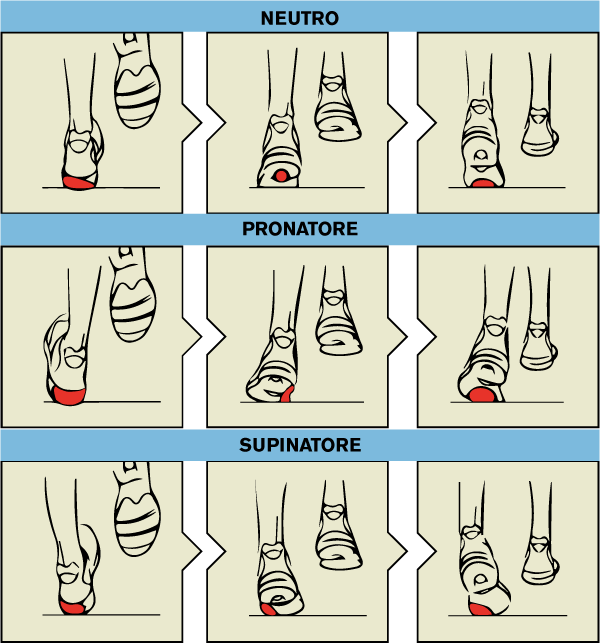What kind of support do we have? Neutral, pronation or supination?
In our shops, customer after customer, we have found that many runners do not know their own type of support and often use the wrong running shoes. A problem that in the long run can become the cause of some injuries.
Understanding how our feet move will help us find the correct shoe with the right type of support.
THE THREE PHASES
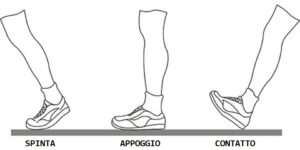 Let’s start by saying that the ideal foot strike in running involves three phases: the contact phase, the stance phase and the push phase.
Let’s start by saying that the ideal foot strike in running involves three phases: the contact phase, the stance phase and the push phase.
During the contact phase, the foot lands on the ground with the outside of the heel.
In the support phase, the weight of the body is completely supported by the foot, which begins to rotate slightly inwards to increase its support surface and better distribute all the weight. This natural and physiological movement is called pronation.
During pronation, the foot prepares itself for the last stage where the calf muscles are loaded like springs and return the energy during the last phase, the pushing phase. In this phase, the weight of the body shifts to the forefoot and the calf and toe muscles contract to allow forward movement. It is here that the movements of the foot are reversed with respect to the previous phase, the plantar arch in fact rises and the foot begins to rotate up and out, in a movement that is called supination.
From here we can see that pronation and supination, in addition to being two movements opposed to each other, are fundamental for the correct biomechanical function of the foot. Through pronation we cushion our weight and stabilise our support, while supination is fundamental for the push and forward phase.
Below, we will analyse in detail what happens in the case of excessive pronation.
OVERPRONATION
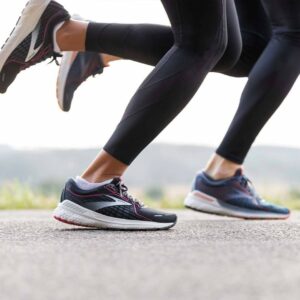 Excessive pronation or overpronation occurs when the foot continues to rotate inwards even after impact, instead of moving into the thrust phase. In these cases, the plantar arch is not very pronounced and the footprint is enlarged precisely because of the partial collapse of the arch, which in turn is abnormally stressed in an attempt to support the entire weight of the body. This will be the cause of the increased stress on the tendon, ligamentous and muscle parts of the foot, which are called upon to do double work.
Excessive pronation or overpronation occurs when the foot continues to rotate inwards even after impact, instead of moving into the thrust phase. In these cases, the plantar arch is not very pronounced and the footprint is enlarged precisely because of the partial collapse of the arch, which in turn is abnormally stressed in an attempt to support the entire weight of the body. This will be the cause of the increased stress on the tendon, ligamentous and muscle parts of the foot, which are called upon to do double work.
HOW CAN WE TELL IF WE ARE OVERPRONATORS?
By checking the soles of our shoes, for example! Knowing how to read the soles of our old shoes can help us understand a lot about our type of support. Those who tend to wear out the soles at the big toe, particularly wearing out the inner area of the forefoot and the outer edges of the heel will tend to have a type of stance characterised by excessive pronation.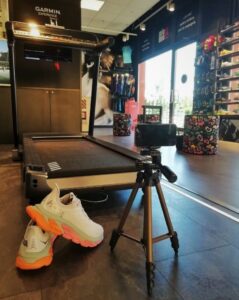 By doing a stance analysis! The mechanism is very simple, just run on a treadmill while your feet are filmed by a camera, allowing the operator to accurately analyse the impact of both feet on the ground. From this analysis it will become clear what your footing characteristics are and from there the choice of the most suitable shoes.
By doing a stance analysis! The mechanism is very simple, just run on a treadmill while your feet are filmed by a camera, allowing the operator to accurately analyse the impact of both feet on the ground. From this analysis it will become clear what your footing characteristics are and from there the choice of the most suitable shoes.
WHICH SHOES TO CHOOSE?
Shoes suitable for overpronators are called anti-pronation shoes or stable. These shoes give control and support to the foot during stride, stance and momentum and differ from other shoes in that they use anti-pronation devices positioned at the arch of the foot or inside the midsole. They are also generally equipped with good cushioning to help reduce the impact on the ground and the weight that is unloaded on the foot. You can find all men’s anti-pronation shoes here and women’sshoes here!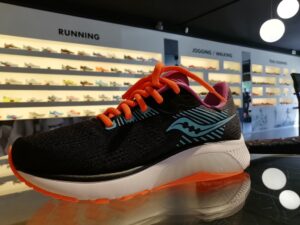
IN CONCLUSION
Choosing the most suitable shoe for us is not always easy, very often we choose our running (or walking) shoes based on our aesthetic taste: there is nothing more wrong. If we care about our health and want to invest our money conscientiously, let’s choose a serious shoe shop that has experienced staff to guide us in the most correct choice and that gives us the possibility to do asupport analysis for an even more targeted choice.
What are you waiting for then? Hurry to get your running shoe analysis at MioMioRun, your specialised 100% running shop, and choose the running shoes that best suit your needs!
 ITA
ITA
 DEU
DEU
 FRA
FRA
 ESP
ESP




